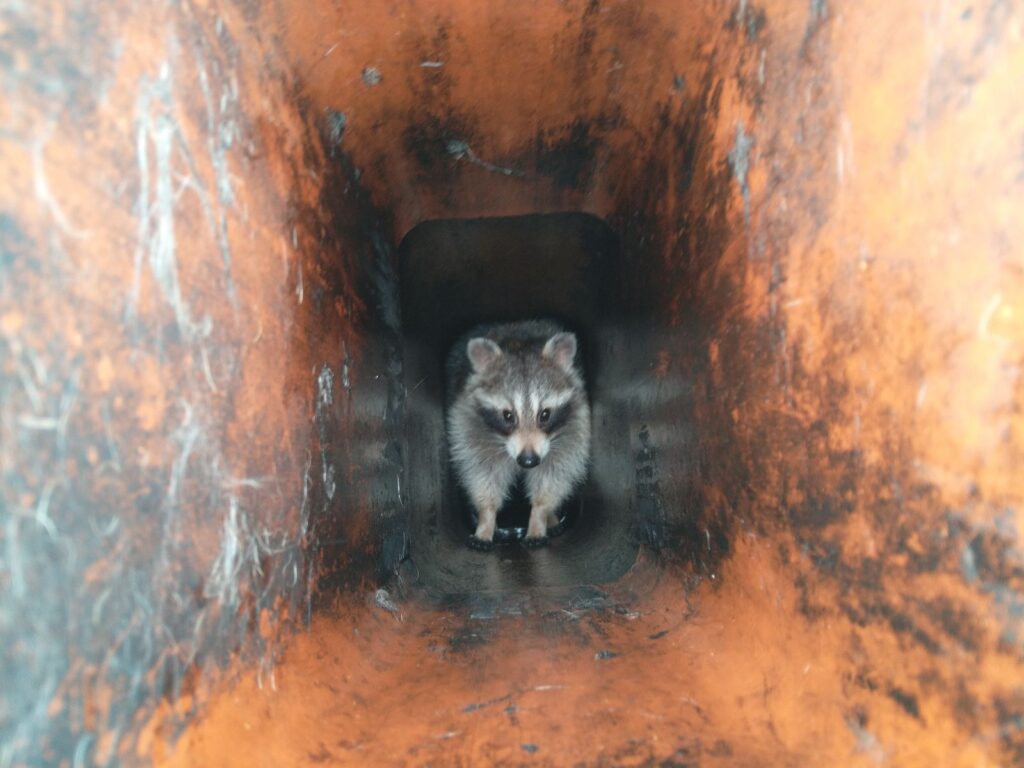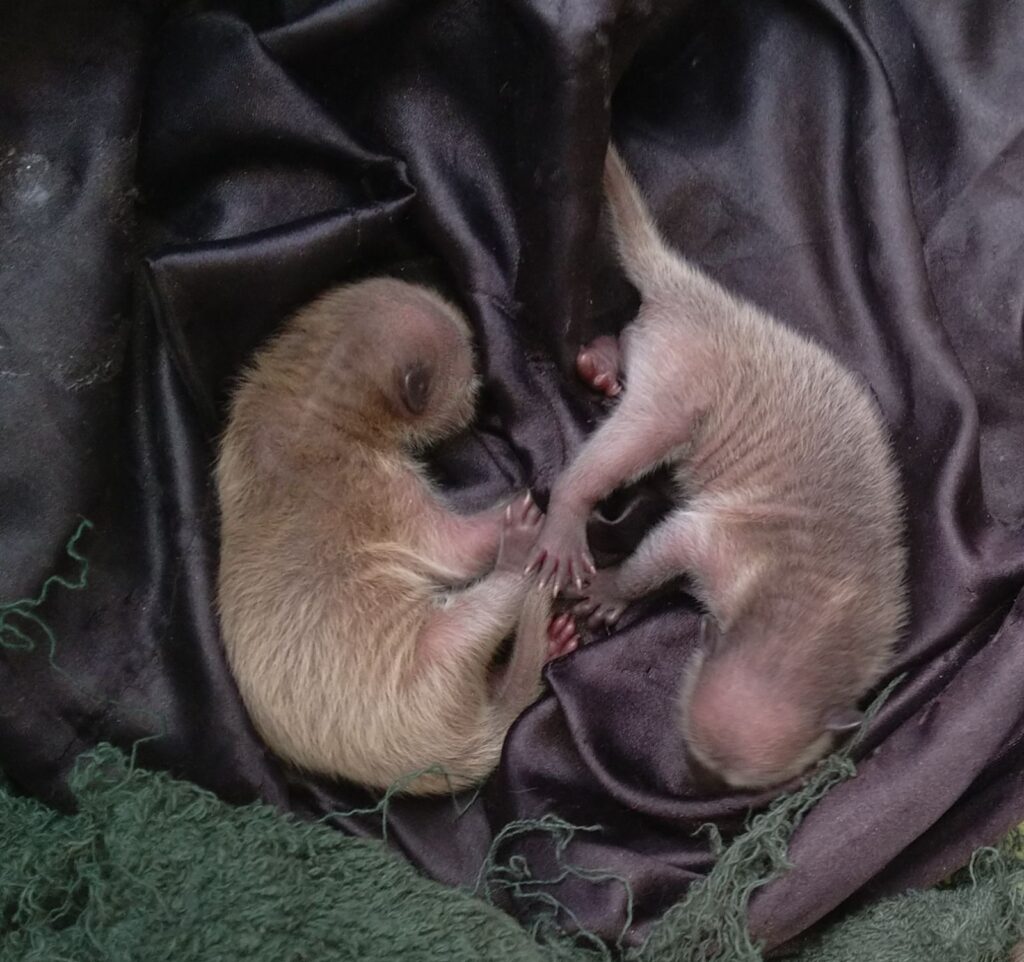Ancaster is a thriving region that creates a perfect environment for raccoons. Not only does it have plenty of readily available food sources in urban areas, but Ancaster also has numerous trails and outdoor attractions with old trees that give the furry bandits a chance to move around without being bothered by people or other animals.
In the spring and summer, pregnant raccoons leave the female groups they live in to search for a safe place to raise their babies. They often make their way into attics so they can raise their kits in peace, and because they can climb both brick and siding, no home in Ancaster is completely safe from becoming a den for baby raccoons. Skedaddle Humane Wildlife Control has a proven method for humane raccoon removal. If you think you have baby raccoons in your home, you can expect us to respond to your call the same way we did to the one described below.
The Situation
You call Skedaddle because you’ve been out of town for a week, and when you return, you hear strange noises coming from your chimney. You can’t tell what animal is making the sounds, but you hear loud and constant squeaking at all hours of the night. We answer the call promptly, and a technician arrives at your door within a few hours.
The Solution

Our technician starts to hear animal activity as soon as he enters the home, and the noise grows louder when he gets close to the chimney. After looking inside, he finds two baby raccoons that are approximately a week old. He can’t see the mother, but he can hear her, so he decides to move the babies with as little disturbance as possible.
Raccoons are immobile until they are about six weeks old, so the only way for our technician to remove them is to gently lift them and place them into a reunion box. This padded box keeps the babies safe and warm while they wait to be reunited with their mother. They have no trauma or injury during the removal process.
Our technician knows that the mother raccoon is accessing the chimney via the roof, so he places the reunification box in a safe spot on your roof near the chimney. He doesn’t want to risk trapping the mother raccoon inside your home by accident, so he installs a one-way door that allows her to get
out but not in. When she smells her babies nearby and decides to leave the comfort of the house, she won’t be able to access the chimney again and will need to find a new din location.
Our technician then provides a thorough inspection of your home, focusing on your attic. As one of our technicians, Anton Sayer, says, “We see some old chimney flues that will crack and create crevices into an attic space where raccoons can gain access”. He wants to be sure that all potential entry points are sealed to keep the raccoons from returning.

The Outcome
A few hours after the baby raccoons are removed from the chimney, a neighbour reports seeing the mother reunited with them. You live near The Dundas Valley, the Ancaster Trail and Tiffany Falls, so there are plenty of spaces for the family of raccoons to find a new home. Our technician returns the following day to remove the reunion box and door from your chimney. We can also supply you with tips on how to prevent wildlife from returning.

Find Compassionate Ancaster Wildlife Removal Today!
Raccoons can spread disease and damage the structure of your home, so it is best to keep them out of your house. Baby wildlife removal is a complicated process, but the experts at Skedaddle have a tried and true way to remove baby raccoons without harming them. Call us today for help getting baby animals out of your home.




